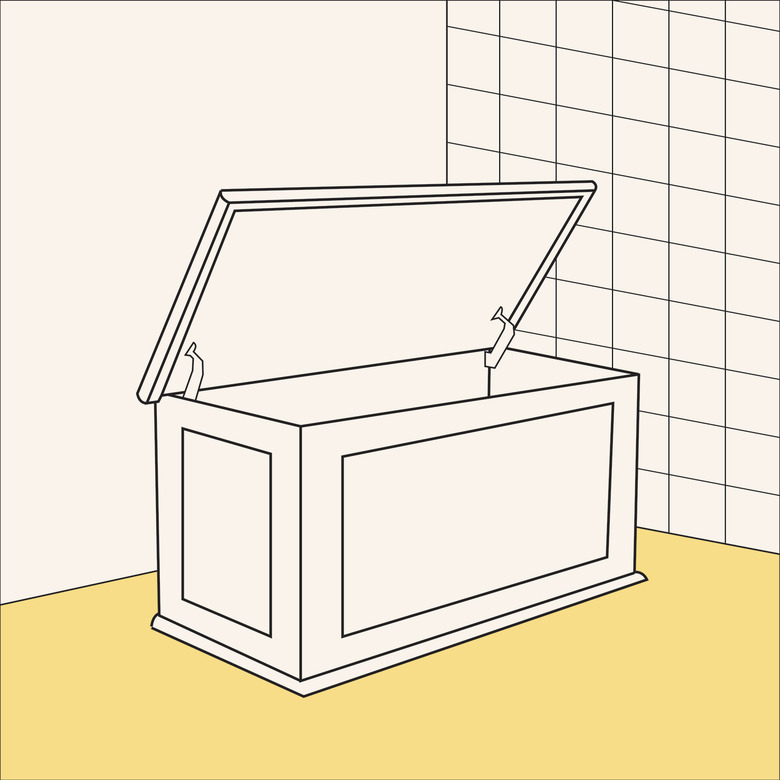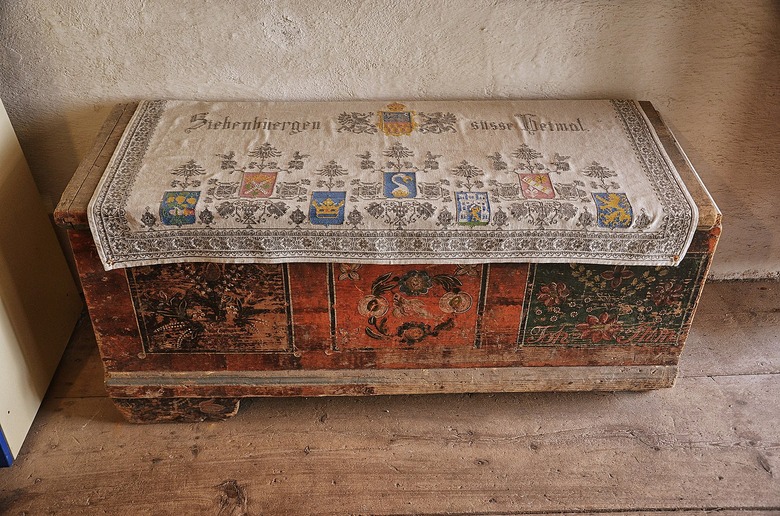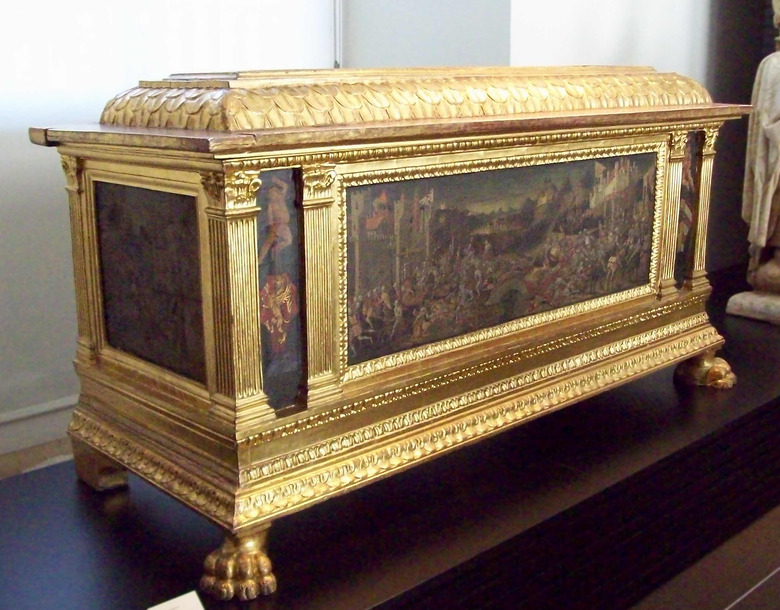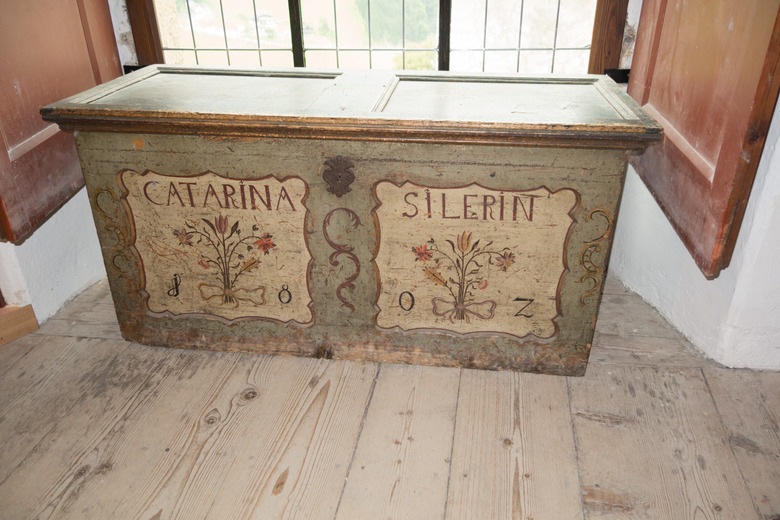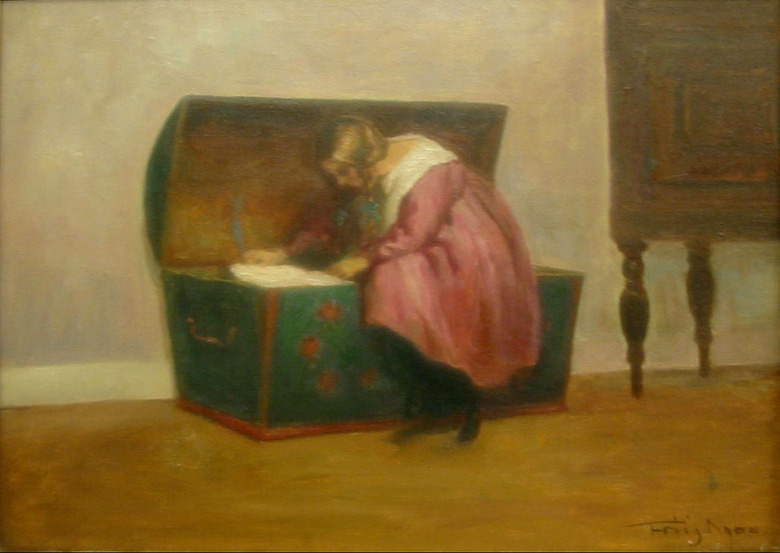The Weird Role The Hope Chest Played In Marriages
In their 2011 book The Hope Chest, Jacquie D'Alessandro, Julie Kenner, and Susan Kearney write that in some shape or form, hope chests have been in existence as long as furniture itself. Yet, why doesn't every household have one today?
Also known as a dowry chest, trousseau chest, or cedar chest, a hope chest is a large trunk of items given to a young girl for her future as a married woman. This tradition is said to be centuries-old and has no pinpointed origin, but depending on one's customs, it can also be seen as a woman's dowry. (The latter refers to the money or property a woman brings to her husband upon their marriage — a tradition that's even mentioned in the Code of Hammurabi, which is estimated to be from 1792 to 1750 B.C., according to Robert Francis Harper's translation of the text.)
Where did hope chests originate?
Where did hope chests originate?
Though they may have different names and appearances, throughout history, hope chests have popped up all over the world. In the July 25, 1976 edition of the Toledo Blade, Debbie Gebolys wrote an article titled, "There's Still Hope For Cedar Chests, Whether Antique Or New." In the piece, she stated that hope chests in fourteenth century England were typically made of oak with cedar lining and had Gothic symbols carved on them. In medieval Italy, these chests were known as cassones, and Renaissance artist Michelangelo is said to have decorated a few. As for the less opportune times in Colonial America, hope chests were often simple boxes with a woman's initials carved into them.
What does a hope chest contain?
What does a hope chest contain?
Traditionally, one's hope chest could contain her future wedding dress, household linens, silverware, quilts, her ancestor's jewelry, or whatever else her family was able to provide. With this in mind, hope chests were built and decorated based on the family's wealth (and overall economy) at the time. Sicilian women from poor families, for example, typically remained unmarried because they couldn't afford to stuff their hope chests with twelve beds' worth of linens. This was written by author Karen Tinori in her 2008 book Unto the Daughters, which also reveals that the quality of the linens in a woman's hope chest represented how much of a "catch" she was. This is ironic because more often than not, wealthy Sicilians would have peasant women sew the linens for them.
Depending on the region, a hope chest could also have an even more specific tradition behind it. According to Thos. K. Woodard and Blanche Greenstein's 2013 Classic Crib Quilts and How to Make Them, there was a custom in which a child would prepare a dozen quilt tops for her hope chest, with the thirteenth top being called a "bridal quilt." Once she became engaged, there was then a party in which women were invited to quilt all the tops together as they prepared for the bride's impending nuptials.
When is a woman given a hope chest?
When is a woman given a hope chest?
Another variation between hope chests is that, depending on one's culture, they can be provided to a woman at different times. Traditionally, a "hope chest" is given to a young girl to represent a family's hopes for her future matrimony. However, they can also be given to a woman upon her engagement, and seen as a "dowry chest" or "dower chest" in societies where marriage is arranged — no hope necessary. For instance, in an ad featured in a 1924 edition of Woman's Home Companion, it states that in the middle of the eighteenth century, King Louis XV of France sent a group of girls to New Orleans to marry French aristocrats settling there. He sent dowry boxes along with them (since the marriages were already negotiated). Inside, there was lace, linen, and silverware they were to furnish their new home with. If, instead, a man were to give his own bride a chest at their wedding, this could be dubbed a "bridal chest." Again, hope chests can differ multiple aspects depending on where one is from.
When did hope chests decline?
When did hope chests decline?
As women gained power, however, hope chests began to lose theirs — this was especially the case in America. As for the rest of the world, the same can be said for the dowry tradition and, as a result, the chests that went along with it. "Although the immigrants who came to the United States in the times of the Industrial Revolution held onto the tradition and passed it on to their children, it seems to have stopped there," writes Gebolys in her Toledo Blade article. In the "Hope-Chests" section of a 1925 Girl Scouts Report — which can be found in Gertrude Whiting's Old-Time Tools & Toys of Needlework — it describes hope chests as being from "strange, dark times when women were chattels." It emphasizes that, at the time of publication, this was no longer the case.
For his article "Hope chests seem to be on the way out" for the October 11, 1966 edition of the Edmonton Journal, Philip H. Love reveals that not everyone was thrilled with the decline of the hope chest. The writer explains that a friend of his felt disillusioned when he discovered his wife didn't have a hope chest. After asking additional friends about the state of their wives' hope chests, he concluded that the item is no longer a household staple in the United States. To find out why, Love reached out to psychologist Dr. Axelrod Id, who told him that because women were focusing on going to college and making their own livings, they didn't want to waste their time and money on a hope chest. In fact, Dr. Id stated that by 1973, the sex ratio would make it so that there are more females than males, causing some women to be unmarried and destined for the life of an "old maid."
Do people still use hope chests today?
Do people still use hope chests today?
In spite of the articles announcing the hope chest's fall during the twentieth century, they are not completely obsolete today. Other than them being a collector's item, hope chests are still used by women today (though not nearly as many as in the past). Now it depends more on their family's traditions and culture, rather than the hope chest's overall popularity. According to the Amish Outlet Store, for instance, "The hope chest remains an integral part of Amish culture." However, the objects placed within the hope chest have changed. Nowadays, the chest can be seen as a way for mothers to store heirlooms they'd like to pass on to their daughters. The Amish Outlet Store also advises that one fill their hope chest with inspirational books, family photos, letters, antiques, and recipes, representing that the chest is about more than one's life as a married woman.
Ultimately, between the rise and fall of the hope chest, we can determine that if there's one thing that's everlasting, it's hope — even if our hopes have changed with the times.
